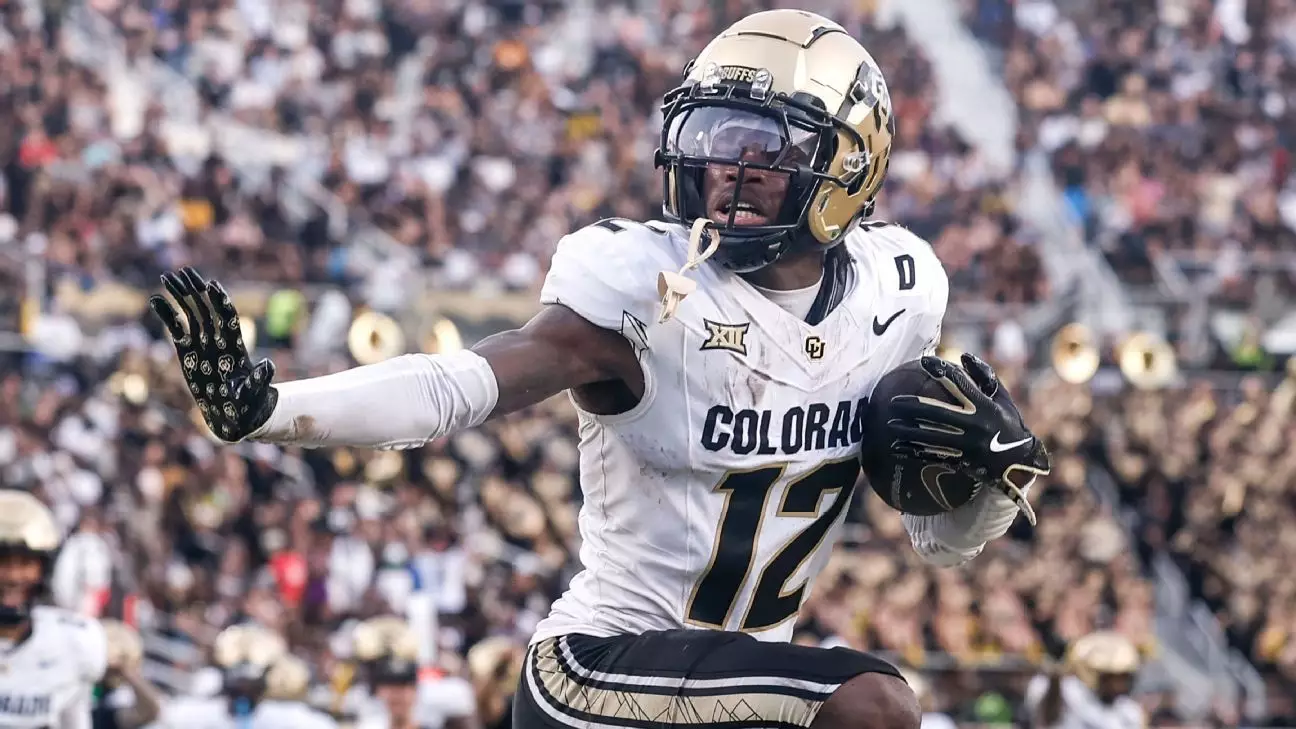In a world where specialization often reigns supreme, Travis Hunter is challenging the status quo with his ambition to thrive as a two-way player in the NFL. The young, dynamic talent from Colorado has garnered significant attention, particularly from the New York Giants as they approach the upcoming draft. The prospect of Hunter playing cornerback and wide receiver at the highest level is not just a fantasy; it is a possibility that Giants general manager Joe Schoen is contemplating seriously. By expressing openness to deploy Hunter on both sides of the ball, Schoen indicates a willingness to tap into a reservoir of untapped potential, which could revolutionize how dual-position players are utilized in the NFL.
Hunter’s aspirations are remarkably bold. He has unequivocally stated that restricting him to one position would crush his dreams, echoing the sentiments of many athletes who yearn to display their full range of talents. Such declaration resonates deeply in a sport where versatility should not be seen as a liability but rather a potent weapon. If Hunter is indeed drafted by the Giants, the franchise might not just be shaping their immediate roster; they could also redefine the landscape of professional football by embracing a two-way player model, akin to an era long past.
Hunter’s Athletic Prowess
The sheer versatility Hunter showcases positions him as an athlete of generational talent. Last season, he participated in an astounding 86% of Colorado’s total snaps, a clear testimony to his stamina, reliability, and adaptability. This is not merely a statistic; it symbolizes a work ethic that aligns seamlessly with the demands of the NFL. While contemporaries like Dane Jackson clocked in at 48% snap share in the NFL, Hunter is setting a new benchmark—a benchmark that could embolden teams to reconsider traditional roles within their rosters.
However, the challenge of excelling in both positions hinges on Hunter’s ability to navigate the complexities of each role effectively. The leap from college football to the NFL is jarring, filled with intricate schemes and game plans that require cerebral agility and relentless preparation. Schoen aptly notes the mental acuity needed, emphasizing that the NFL is not just about physical fitness but also about mastering the strategy behind every play. The mental demands thrown at dual-position players like Hunter could be daunting, but they also fortify him as a once-in-a-generation athlete capable of transforming games.
The Draft Dilemma
As we approach draft day, the Giants face a conundrum. With Hunter considered a potential fit for the Cleveland Browns at the second overall pick, the Giants must strategize how to secure this multifaceted player. The stakes are high, as they also ponder the possibility of selecting a quarterback with their third overall pick. Should they opt for Hunter and risk forfeiting the opportunity to draft a promising signal-caller like Shedeur Sanders, his teammate at Colorado?
The dynamics of the NFL draft are often laced with high-stakes decisions, and Schoen’s philosophy of not feeling “mandatory” to draft a quarterback may offer insight into their broader strategy. In an era where many teams jockey for the best quarterback prospects, the Giants appear unshackled by conventional wisdom, as they contemplate the broader implications of bringing in a talent like Hunter. The convergence of strategy, opportunity, and pure talent underpins this pivotal choice—one that carries the potential to reshape their franchise’s trajectory.
Redefining Success in Sports
Travis Hunter’s journey could herald a transformative evolution in football, emphasizing that success is not merely about excelling in one area but about embracing a holistic athletic identity. As teams like the New York Giants entertain the idea of players who embody versatility, it may lead to an exciting football renaissance, pivoting away from an era dominated by strict role classification. Hunter’s presence in the draft could serve as a catalyst for revolutionizing how we perceive player positions, challenging teams to think innovatively about roster construction.
In a landscape where talent often gets pigeonholed, Hunter’s insistence on dual role capabilities serves as a manifesto for a more dynamic approach to skill utilization in the NFL. The focus should shift to nurturing and harnessing multifaceted athletes, encouraging them to thrive in environments designed for creativity and innovation. Whether the Giants take the plunge and draft Hunter, the timing may be ripe for football to embrace the next frontier by challenging athletes to explore the entirety of their capabilities.


Leave a Reply